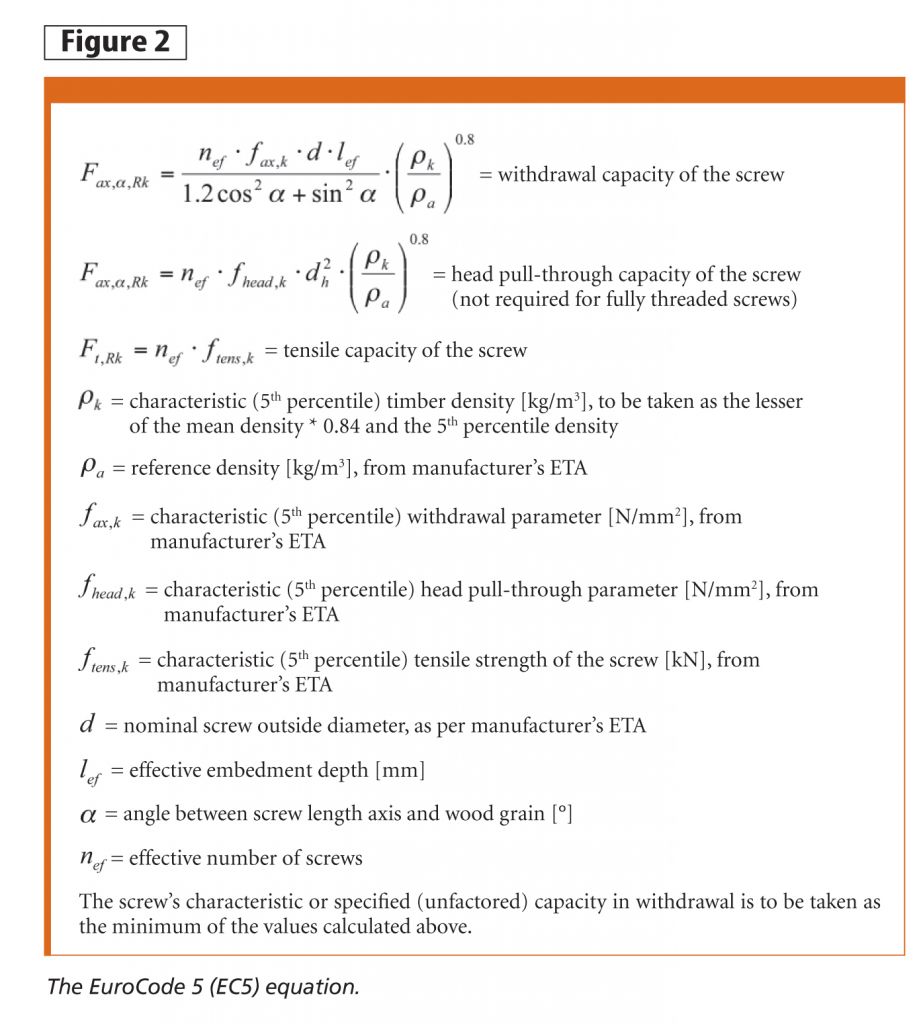Specifying modern timber connections
 Specialized screws
Specialized screws
Some manufacturers have also created self-tapping wood screws with specific features tailored to specialized uses. For example, this author knows of two companies who produce screws with two different pitches, allowing them to draw a pair of members tightly together as long as the change of pitch is located right in the interface between the two members. One company has developed screws with a progressively changing pitch, allowing it to tightly draw together multiple members without the need to ensure a proper interface placement.
Companies have also developed screws with an additional threaded part under the head. The thread under the head has the same pitch as the regular thread—this ensures a certain amount of spacing between two elements without compressing insulation, for example, in between. Instead of transferring the load from one element to the other relying on the material between them, the loads are transferred through the screw shaft.
There is another product that technically is not a screw, but rather a tight-fitting dowel able to drill through the wood and up to three steel plates. It has a short-threaded part under the head to secure the dowel from falling out.
Manufacturers have also engineered various methods for shear transfer between wood and concrete in wood-concrete composites. In some cases, the screw has a distance marker to ensure it is driven to the correct depth before the concrete is poured; in other examples, a placeholder is cast into the concrete allowing for precast elements. Onsite, screws are later installed through the placeholders, ensuring proper shear transfer between the concrete and wood.
There is even a screw that has threads for both concrete and wood. When installing sill plates, a hole can be drilled through the wood into the concrete, and then the screw driven to connect the two. The benefit is the perfect alignment of the hole in wood and concrete as they are drilled in-situ at the same time.
When it comes to the length of self-tapping wood screws, some manufacturers offer 1-m (3.3-ft) and 1.4-m (4.6-ft) models. These long screws can be used in part as replacements for glued in threaded rods in moment connections, but it is recommended a small pilot hole be pre-drilled to set the installation angle and to reduce the friction and drive-in torque.
Timber moment connections can also be achieved using common connectors augmented with the STS as reinforcements to increase capacity. There are also steel plates that, together with their screws, can be used in a system to create a timber moment connection.







